Tired of scrolling through the pages to find the right salon app tech stack?
When it comes to the technical aspect of the app, the complexity and in-depth functionality play an important role.
Additionally, in this competitive world, identifying a suitable tech stack for your salon app can be a challenge.
Well, we have got your back.
Let’s find out about an ideal tech stack for your salon app in this blog.
What is a Salon App Tech Stack?
Before you get to know about the salon app tech stack, it's important to learn what a tech stack is.
Well, a tech stack comprises frontend development for the user interface. Backend development and third-party integrations for the core features, like payment processing and others.
With the right tech stack, you can lead the industry.
When it comes to salon app tech stack, it's all about the key technologies, programming languages, front-end tech stack, platforms, and different types of frameworks that you can include while creating a salon app.
Under selecting the tech stack, all you need is to access the different types of technologies, that too based on the type of platforms.
Many salon apps have led the industry by capturing the interest of the target users and including a suitable technology stack.
Let’s learn more about the salon app statistics in the section below.
Market Stats About Salon Apps
Do you know that the global salon services market is projected to grow to USD 447.76 billion by the year 2032?
Additionally, the salon services market size is worth USD 481.81 billion by the year 2032. China has the highest number of users when it comes to beauty apps, as per the global consumer survey conducted in 2021.
In the United States, Umax was the most downloaded app in the beauty segment in the year 2024, it was downloaded about 2.3 million times that year, followed by others.
The growth of industry represents a particular reason to create a salon app. Therefore, it's essential to select an ideal tech stack for your beauty app business in this diversified market.
Want to know the type of technologies that the best salon apps include?
Well, before that, let’s understand the basics of the beauty app tech stack in the section mentioned below.
Tech Stack Basics
Before you proceed with the ideal salon app tech stack, let’s evaluate the basics in brief.
Here’s a list to consider.
A] Programming Languages
A programming language can be defined as a set of technologies and codes that are used by humans to instruct the computer what functions it needs to perform. This can further be determined as a written language that helps programmers to communicate effectively.
B] Front-end
The front-end technology is all about the types of tools, languages, along various frameworks used to create the user interface and client-side logic of a website or application. The key components of a front-end tech stack are HTML, CSS, JavaScript, and others, depending on the type of software.
C] Libraries
Libraries can be defined as reusable code incorporated in applications. The libraries can be used in the tech stack to encapsulate the complex functionalities that help the developers to leverage the existing code.
D] Database
It is a collection of structured information, data, that is typically stored electronically in a computer system. Here, the developers store, retrieve, and manipulate the data over the web or an app.
E] Servers
Servers can be defined as the hardware and software that host the application and make the apps accessible. It is a system that provides resources, data, services, and programs to other computers.
F] Operating System
Operating systems are the foundations on which the other software runs. It is the foundation that manages the hardware and software resources, enabling the other software components to enhance the functioning of the app.
Till now, we have discussed the concept of technology stack, along with the basics and market stats. Well, let’s discuss the importance of a suitable salon app tech stack in the next section.
Importance of A Suitable Salon App Tech Stack
A tech stack helps users to shape a project’s development procedure, its diversified features, and its scalability.
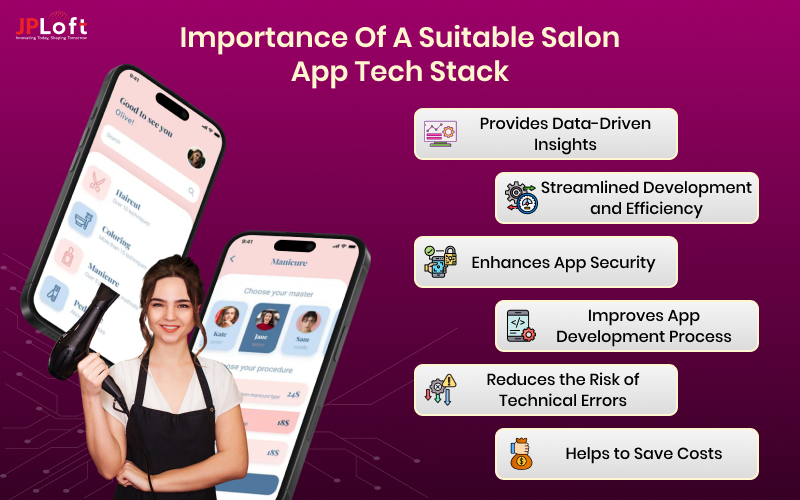
Let’s find out more about the benefits in the given points.
1. Provides Data-Driven Insights
With the assistance of a suitable salon app tech stack, which comprises analytical tools with advanced technologies, it helps to provide valuable insights related to user behavior and product performance.
Along with this, a tech stack includes a modern data stack, which is a cloud-native data infrastructure framework that enables real-time data ingestion.
2. Streamlined Development and Efficiency
A well-chosen stack provides a clear framework for developing and using the standardized tools and processes.
Additionally, it allows the developers to leverage the existing frameworks and libraries to accelerate development and improve the code quality. It also leads to faster development cycles and provides more reliable solutions.
3. Enhances App Security
A well-selected technology stack helps in enhancing the overall security by including the latest and advanced technologies that reduce vulnerability to the most common security threats.
It does help to build security features for promoting secure coding practices, along with other security measures.
4. Improves App Development Process
Integrating a suitable app tech stack is effective in enhancing the overall app by adding valuable technologies.
The adoption of the latest technologies can be useful in including the latest technologies based on the dignified platforms. It makes managing and coordinating the diversified tasks simple, which enhances the overall development procedure.
5. Reduces the Risk of Technical Errors
A suitable and effective technology stack is effective for reducing development errors through enhancing expertise, promoting the best and suitable practices, and encouraging improvement within the development team.
Along with this, it helps in managing as well as coordinating the tasks and provides more significant control over the development process.
6. Helps to Save Costs
Adding a suitable tech stack to the app can help save on the overall costs. Advanced technologies are designed in a manner to optimize the complete resources.
It does provide a standardized and organized approach to software development that automatically saves the cost to create a salon app.
These were the defined points stating the benefits of a suitable salon app tech stack. Now, let’s examine the factors impacting the salon app tech stack.
Factors Impacting the Salon App Tech Stack
What are the different factors affecting the salon app technology stack?
The factors will help you decide the other and relatable parameters before you decide for your salon app tech stack.
Let’s evaluate that all here.
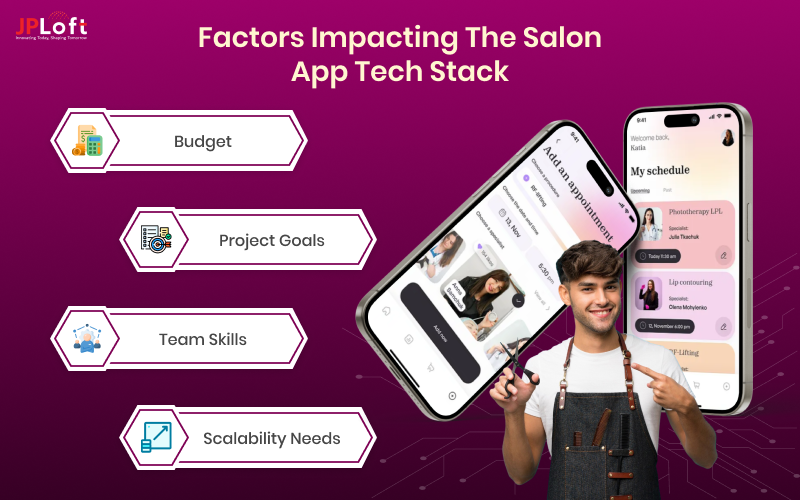
► Budget
Budget has a direct relation with the complete tech stack selection process. An advanced technology stack will require a high budget. Thus, it impacts the complete process of managing and selecting a tech stack.
For example, when you use and implement a complex and advanced tech stack, it will increase the total cost of implementation.
► Project Goals
A project goal has a large impact on the salon app tech stack. You should decide the technology stack based on the actual aim of your app. The project goal says a lot about the app.
For instance, the goal of the project is to launch the app over Android, then it will impact the complete selection and choice of salon app tech stack.
► Team Skills
A team of experts can help you select and foster the technologies, as they are well aware of the type of technologies that will be effective for your business app.
Additionally, a cohesive team can help build an effective technology stack and as per the desired application. A well-experienced developer can improve the tech stack selection process by sharing values to foster a complete app development process.
► Scalability Needs
Scalability is a common factor impacting the salon app tech stack selection process. Considering scalability in the tech stack selection is useful to enable the system to handle increased traffic or data over time.
This factor is useful in the long run and will help your app to sustain the competition. Thus, to ensure that your app can beat the competition, it's important to consider scalability as an important parameter.
These were all the important factors that you cannot ignore when it comes to selecting a suitable technology stack.
Now, your wait to identify the suitable technology stack elements is over.
Are you ready to cover them all in the following section?
What is Included in a Salon App Tech Stack?
A salon app tech stack should be effective and error-free. Additionally, it should consider all the important parameters that will support the app.
Let’s learn them all here.
1. UI/UX Design (Front-end)
The front end for the salon app should be attractive and engaging. It can comprise the following technologies. It includes the overall display of the app and the type of
-
Adobe XD/Figma: For wireframing, prototypes, and UI design.
-
HTML/JavaScript/CSS3: Helps to frame the structure, and is effective in proceeding with the layouts. However, JavaScript and CSS3 are particularly useful for admin or user dashboards.
-
React Native/ Flutter: For cross-platform development, the technology helps ensure faster development and consistent UI/UX.
Tools:
-
Sketch: It is one of the tools used to create the user interfaces for websites and apps.
-
Figma: Figma is a tool for designing interfaces and is primarily used for UI/UX design and prototyping.
2. Server Side (Backend)
The server side or backend of a salon app can be determined as a part that runs on a server and is highly important for managing the data of the app.
-
Programming Languages: The selection of the programming languages depends on the type of platform. For iOS, you can use Swift, and for Android, it is Kotlin. For cross-platform development, languages such as React Native and Flutter should be adopted.
-
Database: PostgreSQL/MYSQL can be used for structuring the data, ideal for booking systems for the salon services. However, MongoDB is a NoSQL option for enabling flexibility with unstructured data and services.
-
Real-Time Communication: It does offer real-time and instant communication that fosters collaboration. It includes technologies such as Socket and Firebase.
Frameworks:
-
Express.Js
-
Laravel
-
Ruby On Rails
-
Spring Boot
-
ASP.NET
3. API Integration
API Integration is an important process that connects two or more software systems through the use of APIs to exchange data and perform crucial actions. These are the protocols and standards that help to connect different interfaces and software applications.
-
Payment Gateway Integration: For the payment gateway integrations, the developers can use and implement Stripe, PayPal, Razorpay, Apple Pay, and Google Pay. It will help the salon app proceed with the user payments.
-
Maps and Location Services Integration: It's all about adding the maps and location devices to the apps. It helps the users to reach the salons effectively.
-
Push Notification Integration: This is an important feature to add to the Salon app tech stack that is useful to keep the users engaged with the salon app.
Tools:
-
SoapUI
-
Rest Assured
-
Apache JMeter
-
Postman
4. App Security
The app's security plays a vital role in creating a salon app. The salon app cannot reach the desired audience without a strong security network. The types of security patterns that you can include here can be detailed as follows.
-
OAuth 2.0/JWT: It is an important network protocol effective for building a secure user authentication and authorization.
-
SST/TLS Encryption: It is used and implemented for building a secure data transmission between the users and the service providers.
-
Firewall: A firewall enhances the security of the salon apps by acting as a gatekeeper for the network traffic, preventing unauthorized access and malicious activity.
-
Anti-phishing Measures: These measures are used and implemented to protect the salon app from any kind of suspicious activity.
Tools:
-
SAST
-
DAST Tools
-
Veracode
-
Checkmarx
5.. Cloud Infrastructure
The salon apps use the cloud infrastructure, leveraging diversified services such as Google Cloud Platform and Amazon Web Services (AWS). Here’s all about them.
-
Microsoft Azure: It is used for cloud hosting and scaling.
-
Google Cloud Platform: It is a cloud computing service that is offered by Google, which helps businesses to host and manage databases, storage, and other services.
-
Amazon Web Services (AWS): It is used for hosting, storage, and processing computing needs, along with offering a robust and scalable backend infrastructure.
Tools:
-
Terraform
-
Pulumi
-
AWS CDK
-
OpenTofu
6. DevOps & CI/CD
DevOps and CI/CD significantly streamline and improve the overall development and deployment of salon apps. Here are the detailed elements that can be included for the same.
-
Docker: It's important for containerization and ensuring a consistent development environment.
-
Kubernetes: It is used for salon apps to automate and streamline the deployment, scaling, and management of containerized applications, which helps to manage and scale a salon’s application.
-
Jenkins/GitLab CI: These technologies are used to automate the process of building, testing, and deploying salon apps, which enables faster development cycles.
Tools:
-
Bitbucket
-
Buddy
-
Argo CD
-
CircleCI
7. Artificial Intelligence and Machine Learning
AI and machine learning play a crucial role in enhancing salon apps through automating the tasks, personalizing the customer experience, as well as optimizing business operations. When it comes to the tech stack of salon apps, you should continue with the top technologies. Let’s list them below.
-
Chatbots: These are crucial for salon apps, as they enhance the client experience, improve operational efficiency, and enhance revenue.
-
Recommendation Engine: Suggest hairstyles, services, or products based on the user's preferences. Here are the tools, such as TensorFlow/PyTorch and Scikit-learn.
-
Sentiment Analysis & Feedback Mining: To select an on-demand beauty salon app tech stack, sentiment analysis and feedback mining are crucial phenomena.
Tools:
-
NLTK/spaCy
-
Optaplanner
-
Google OR-Tools
-
Rasa
-
Dialogflow
Let’s learn more about it in the given table.
|
Component |
Type of Technology |
Tools/Frameworks |
Description |
Use Case |
|
Frontend (Mobile/Web) |
UI Development |
React Native, Flutter, Swift, Kotlin, React.js |
Builds user interface for iOS/Android/Web |
Customer booking, profile, payments |
|
Backend (API Layer) |
Server-Side Logic |
Node.js, Django, Laravel, Express.js |
Handles business logic, API endpoints, and authentication |
Booking flow, staff availability, and CRM |
|
Database |
Relational/NoSQL Database |
PostgreSQL, MySQL, MongoDB, Firebase |
Stores user data, appointments, services, and reviews |
Central data storage |
|
Authentication |
Identity Management |
Firebase Auth, Auth0, OAuth 2.0 |
Manages user sign-in, social login |
Secure login, user roles |
|
AI Personalization |
Recommendation System |
TensorFlow, Amazon Personalize, Scikit-learn |
Suggests services/products based on user history |
Personalized user experience |
|
Chatbot / Virtual Assistant |
Conversational AI |
ChatGPT API, Dialogflow, Rasa |
Automates queries, booking assistance |
24/7 customer support |
|
AR Try-On Feature |
Computer Vision / AR |
OpenCV, MediaPipe, DeepAR, Banuba |
Allows users to try hairstyles/makeup virtually |
Enhanced user engagement |
|
Appointment Scheduling |
Optimization Algorithm |
Google OR-Tools, OptaPlanner |
Smart calendar management for staff/services |
Efficient booking, avoid overlaps |
|
Payments |
Payment Gateway |
Stripe, Razorpay, PayPal |
Handles transactions securely |
Service/product payments |
|
Push Notifications |
Messaging Service |
Firebase Cloud Messaging, OneSignal |
Sends booking reminders, promotions |
Retention and engagement |
|
Analytics & BI |
Data Analysis |
Google Analytics, Mixpanel, Power BI |
Tracks app usage, sales, and customer trends |
Business insights, performance tracking |
|
Feedback & Sentiment |
NLP / Sentiment Analysis |
TextBlob, BERT, NLTK, spaCy |
Analyzes user feedback to gauge satisfaction |
Improve service quality |
|
Cloud & Hosting |
Infrastructure-as-a-Service |
AWS, Google Cloud, Azure |
Hosts backend, storage, and AI services |
Scalable deployment |
|
DevOps / CI-CD |
Deployment & Automation |
GitHub Actions, Docker, Jenkins, Firebase CI |
Automates testing, deployment, and updates |
Faster delivery, rollback support |
|
CRM / Email Marketing |
Customer Engagement |
Mailchimp, HubSpot, SendGrid |
Manages campaigns, user retention strategies |
Upselling, loyalty programs |
This is a table that you should consider when you need to select a comprehensive salon app tech stack.
Now, after evaluating the table and technology stack of the salon app, are you confused about how to proceed with the same?
We understand that when it comes to adopting the right salon app tech stack, it can be a complicated task to consider. Thus, the following section can help you select an ideal salon app tech stack.
Let’s learn and proceed with them below.
How to Select an Ideal Salon App Tech Stack?
When you come to the step of the tech stack selection, including and implementing the suitable one can be a challenge.
But not anymore, in this section, you can evaluate the steps to include and select an ideal salon app tech stack.
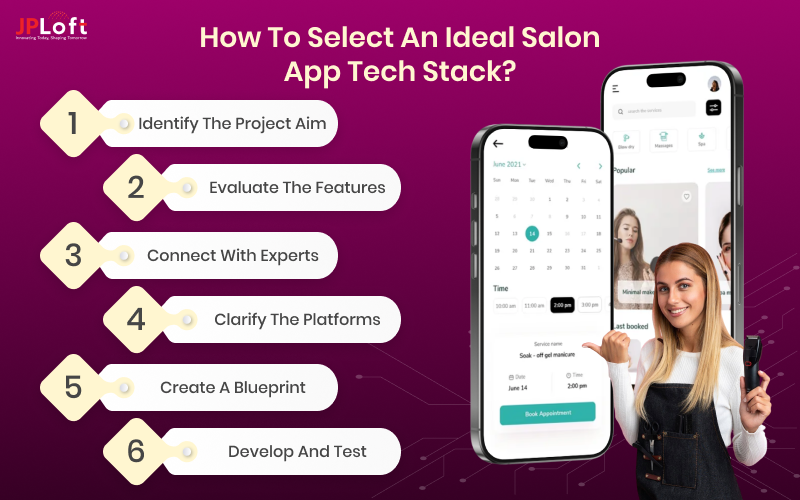
Step 1: Identify the Project Aim
You cannot proceed with the salon app tech stack without considering the target of app development.
Hence, the foremost step to be considered here is to learn and have an in-depth analysis of your actual aim in creating the app.
Step 2: Evaluate the Features
It's important to analyse the types and variety of features that you want to include in your dream salon app.
After all, you will build a tech stack that is effective to support the selected features required to be used in the salon app design.
Step 3: Connect with Experts
Not everyone knows about the technologies, thus, you can hire mobile app developers who can help you in this process.
You can discuss your salon app tech stack expectations with them, and they will help you align all the prompt strategies for the same.
Step 4: Clarify the Platforms
The tech stack depends on the type and number of platforms. Here, selecting the iOS platform will require technology as Swift, while for Android, you require technology such as Kotlin.
You can connect with Android app development services or iOS app development company or both, based on the current industry parameters.
Step 5: Create a Blueprint
Now, it's time to create a blueprint for your salon app tech stack, which will comprise identifying the type of programming languages, databases, cloud infrastructure, and all other tech stack components important for the salon app tech stack.
Here, you can discuss with the team and avoid challenges in salon app development. The step is all about laying the foundation for the app.
Step 6: Develop and Test
A human tends to take further steps and forget about the past. However, when it comes to salon app tech stack, you cannot commit this mistake.
Thus, select the prompt tech stack for the beauty salon app development and then perform mobile app testing.
These were all the crucial steps to select the best salon app tech stack in the current competitive era.
Well, if you want to know more, connecting with the team of experts might help.
How JPLoft Can Elevate Your Salon App Development Journey?
Searching for a leading team of developers?
You don’t need to wander anymore.
JPLoft is here to help you with the diversified technologies to build your dream app. Our team is ready to assist you in every step.
We are the leading Salon App Development Company, ready to help you out with the challenges while converting your dream app into reality.
Our team is ready with every prospect to help you out with the technologies, designs, or maintenance for your app.
Conclusion
Selecting the right tech stack for a salon app is more than just choosing tools—it’s about aligning technology with business goals, user expectations, and future scalability.
From front-end frameworks like React Native and Flutter to backend systems like Node.js and Laravel, and databases like PostgreSQL to AI-powered recommendation engines and chatbots, each component plays a critical role in building a robust, user-friendly app.
Cloud infrastructure, DevOps tools, and security protocols ensure that the app performs efficiently, scales with demand, and protects user data. As the salon and beauty industry grows exponentially, leveraging the latest technology stack can give your app a competitive edge, helping attract, engage, and retain customers effectively.
FAQs
An app tech stack is a combination of technologies, programming languages, tools, and frameworks used to develop the front end, back end, and overall functionality of a mobile or web application.
To select an ideal salon app tech stack, define your salon app’s goals, features, target platforms, and budget, then consult experts to choose technologies that ensure performance, scalability, and security.
Use Swift for iOS, Kotlin for Android, and Flutter or React Native for cross-platform apps. Backend languages include Node.js, Python, or PHP, based on project requirements.
Yes, platform choice affects your tech stack – iOS uses Swift, Android uses Kotlin, while cross-platform apps use Flutter or React Native, influencing overall architecture and development tools.
Define app goals, identify features, choose platforms, consult experts, create a blueprint of required technologies, and test thoroughly before deployment to ensure scalability and performance.





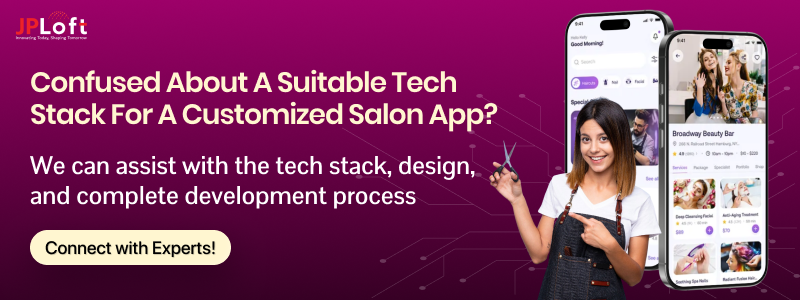
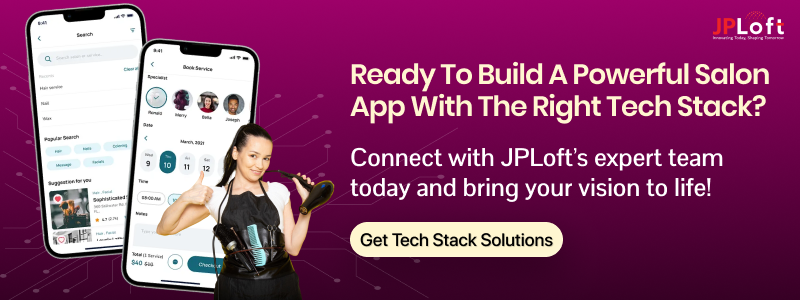

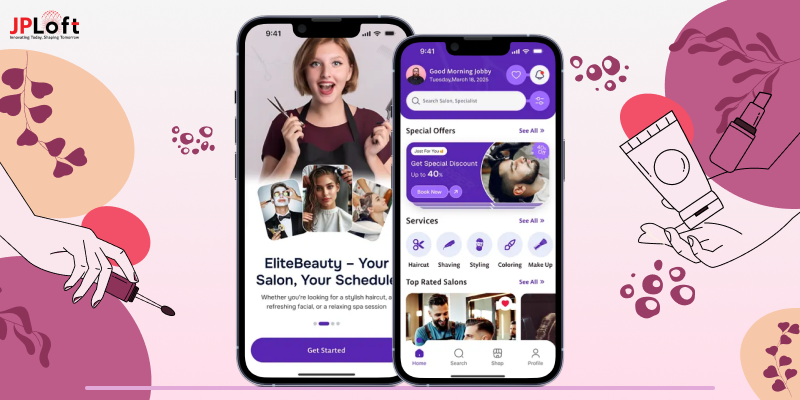
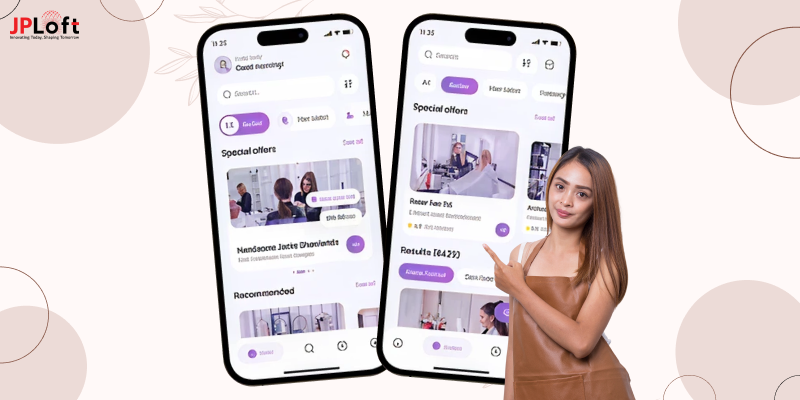
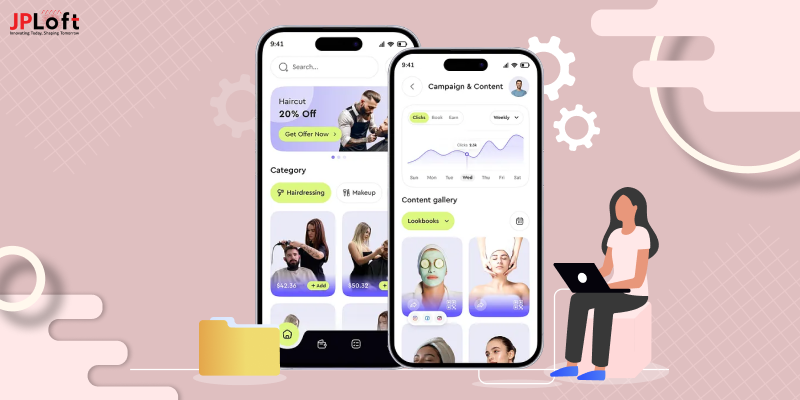


Share this blog